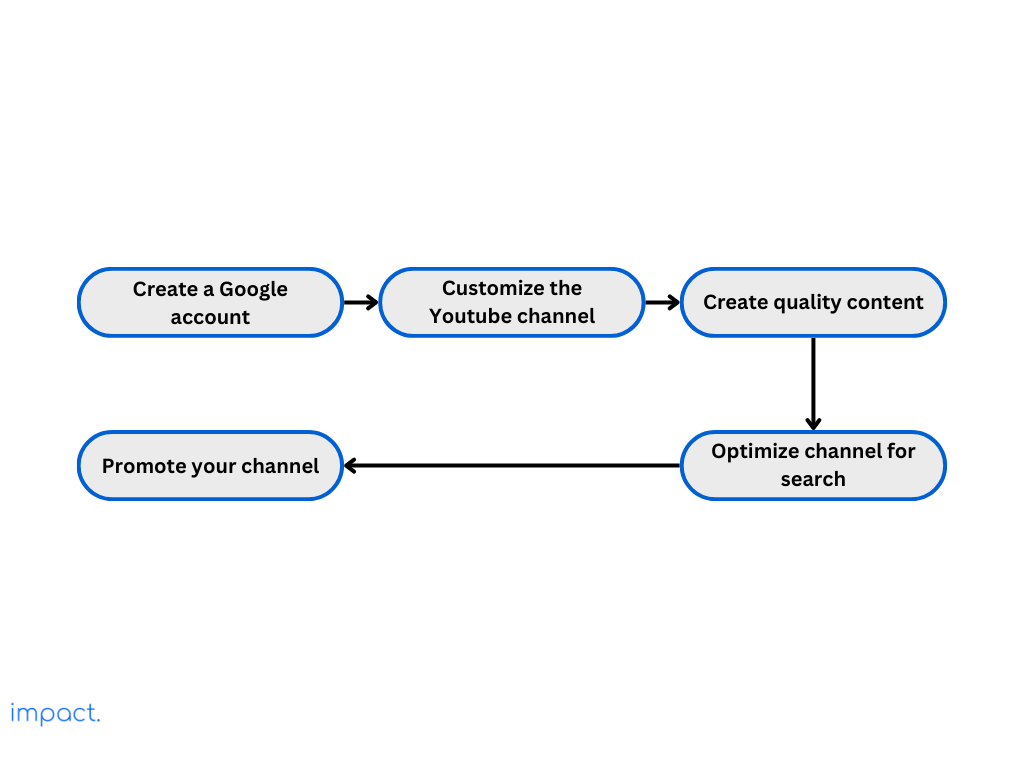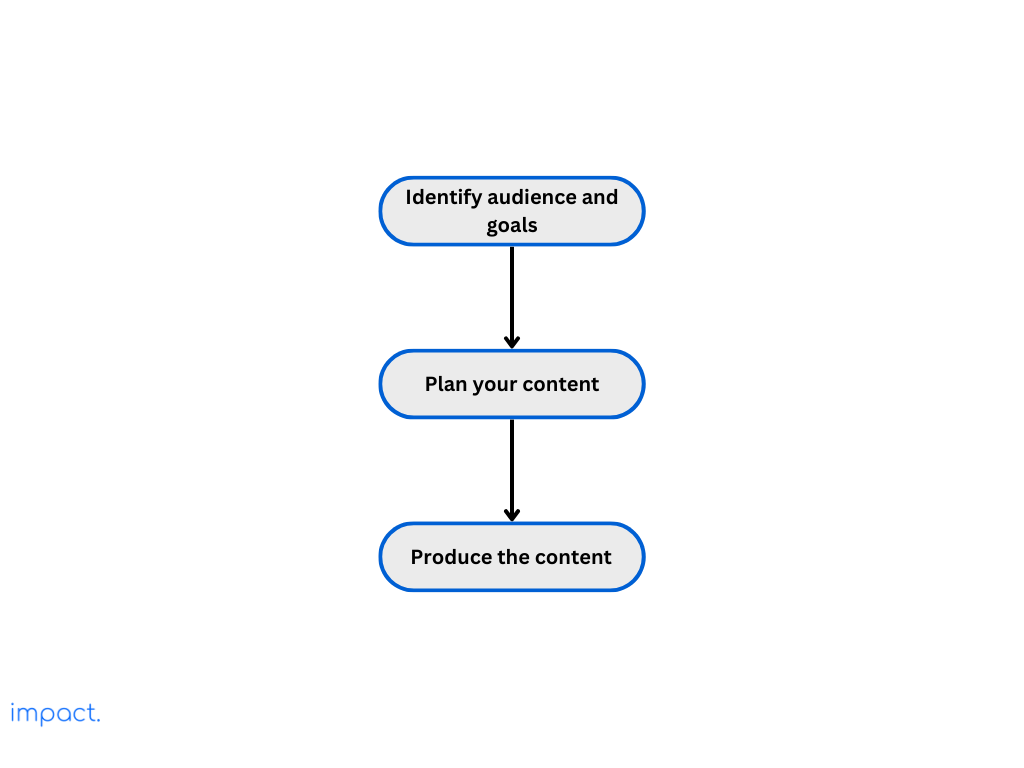Improving CRM Efficiency: 3 CRM Processes You Need to Know
As a business owner, you understand that customers keep your company going. Ensuring they are…
Sean Thobias
September 25, 2024YouTube is where creators and businesses thrive, reaching audiences worldwide through captivating videos, the ultimate tool for online engagement. From Facebook to LinkedIn and beyond, video is the top choice, adored, viewed, and shared across all social platforms.
This guide maps your journey to YouTube marketing triumph, guiding you from channel inception to content crafting and brand building. With over half of marketers (55%) already utilizing YouTube’s influence, grasping its methods, tactics, and top tips is critical to captivating your audience like never before.
Video and YouTube are huge on the internet, grabbing people’s attention with cool videos that spread everywhere. However, YouTube isn’t just about fun; it’s a powerful tool for marketing and connecting with others online.
Let’s explore ways how YouTube as a platform works:
Registered users upload videos to their YouTube channels. These creators can set privacy settings for their videos, making them public, private, or unlisted.
Users can engage with videos and creators in several ways:
Users can discover videos on YouTube through various means:
YouTube allows businesses and content creators to advertise and connect with their desired viewers. Advertisers can make campaigns using various ad types like pre-roll ads, display ads, and sponsored content, tailoring them to specific demographics, interests, and keywords.
YouTube offers various monetization options for creators to earn revenue from their content:
YouTube has tools like Content ID to safeguard copyrighted content and enforce intellectual property rights. Content ID scans videos for copyrighted material, letting rights holders claim or make money from their content. Users can also report copyright violations and settle disputes on YouTube.
YouTube is a vast social media platform with about 2.9 billion active monthly users globally in 2024. This number is predicted to grow by 200 million users, around 6.89%, from 2024 to 2025.
Businesses can benefit from this vast user base by using YouTube to reach potential customers worldwide. By consistently sharing quality content and teaming up with influential creators in your field, you can increase your brand’s exposure and attract more traffic to your business.
Backed by Google, YouTube videos frequently appear in search results, boosting visibility and attracting natural visitors. Many search result pages now showcase video carousels, with over 94% of those videos sourced from YouTube.
By leveraging YouTube marketing, you can score backlinks to your site, making it more visible on search engines. This approach also strengthens your business’s online reputation, directly influencing its ranking on Google’s search results.
In today’s digital age, video content captures attention quickly and effectively. YouTube marketing empowers businesses to convey their message through captivating videos, keeping viewers engaged.
Videos are a dynamic tool for storytelling, ideal for showcasing products, providing demos, and sharing customer experiences.
YouTube is an excellent platform for boosting your brand’s credibility. It’s the go-to spot for product research and buying decisions, with about six in ten people finding it trustworthy for shopping.
Creating valuable content on YouTube helps you establish authority in your field. Sharing industry knowledge and expert advice builds trust with your audience, positioning your business as a leader in the industry.
YouTube marketing can boost your profits — 81% of marketers credit videos for directly boosting their sales.
YouTube’s various shopping tools, such as cards, end screens, channel stores, and tagged products, give marketers ample opportunities to sell both within and outside the platform.
YouTube isn’t just a tool to enhance your marketing; it’s a potential money-maker in its own right. You can earn cash from views and engagement if your channel meets YouTube’s Partner Program requirements.
With compelling content that draws in viewers, your business can tap into YouTube as a source of passive income while also showcasing your offerings.

If you don’t have one already, create a Google account that you’ll use to manage your YouTube channel. Ensure it’s linked to an email address you check regularly.

Know your target audience and what you want from your YouTube marketing. Set clear goals, such as raising brand awareness, bringing more people to your website, generating leads, or increasing sales.
Brainstorm ideas your audience will love and help your marketing goals. Make a content calendar to plan when you’ll post videos regularly so your audience knows when to expect new content.
Here are some popular content that are used for YouTube marketing:
Invest in making quality videos that grab people’s attention and provide helpful content for your followers. Consider your videos ‘ format, style, and length based on your audience preferences and the type of content you’re creating.
The YouTube algorithm tracks how users engage with videos, considering factors like watch time and user feedback to suggest similar content. By analyzing viewers’ preferences, the algorithm curates what the users might like.
Use keywords strategically in titles, descriptions, and tags to boost your video’s visibility. Create content encouraging likes, comments, and shares, and adapt the length and format to match your audience’s preferences.
Promote your video across different channels to maximize its reach and engagement. Share on social media, embed it in blog posts or emails and collaborate with influencers or fellow companies in your niche.
Engage with your viewers by responding to comments, addressing questions, seeking feedback, and showing appreciation for their support. Dedicate a specific time to check video interactions and engage with users to ensure you don’t overlook this crucial aspect.
Thumbnails are vital on YouTube because they’re what people see first and help get clicks — 90% of top videos have custom thumbnails. Create captivating and pertinent thumbnails showcasing your video on licks to enhance its appeal and engagement.
Use clear pictures, easy-to-read words, and exciting visuals to make good thumbnails. What people like in thumbnails can change, so it’s wise to stay updated on what’s popular in your community.
Studying your rivals’ YouTube channels is critical to understanding effective strategies in your field. You can enhance your approach by pinpointing successful content types, subjects, and engagement methods.
Identify gaps in their content that your brand can address. Seize opportunities your rivals might overlook and capitalize to stay ahead of the curve.
Consistency is vital to building a loyal YouTube audience. Establishing a regular upload schedule helps set expectations for your viewers and keeps them returning for more.
Consistency helps improve your channel’s visibility in YouTube’s algorithm and fosters trust and loyalty among your audience. Whether weekly, bi-weekly, or monthly uploads, stick to your schedule to maintain momentum and keep your audience engaged.
There are countless creators on YouTube, each with their dedicated followers. You can team up with these creators to showcase your offerings uniquely and engagingly.
Identify creators in your niche whose audience matches yours and suggest partnership ideas like co-hosting videos or cross-promotions. Collaborating exposes your channel to new viewers and spices up your content, keeping your audience hooked.
Keeping an eye on your YouTube stats is crucial to understanding who’s watching, how your videos are doing, and where you can improve. Focus on numbers like watch time, audience retention, demographics, where your viewers are coming from, and how engaged they are to figure out what works and what doesn’t.
With this information, you can tweak your content plan, make better videos, and reach your YouTube goals. It’s all about understanding your audience and using that insight to improve your YouTube marketing.
YouTube presents a prime chance for marketers to engage with vast audiences and boost brand credibility through captivating videos. Although it might seem daunting initially, YouTube makes sharing and watching videos easy, meeting your audience’s needs for learning, fun, and engaging with brands through video.
Integrating Customer Relationship Management (CRM) software can amplify YouTube marketing efforts by streamlining operations further and offering valuable insights into audience behavior and preferences. By leveraging this data, businesses can tailor content to meet audience needs, maximizing the impact of their marketing campaigns.
McDonald, J. (2022, July 4). Social Media Marketing Workbook: How to Use Social Media for Business.
Impact Insight Team
Impact Insights Team is a group of professionals comprising individuals with expertise and experience in various aspects of business. Together, we are committed to providing in-depth insights and valuable understanding on a variety of business-related topics & industry trends to help companies achieve their goals.
Contact us to get complete ERP features comparison of top 7 ERP systems in Indonesia.
